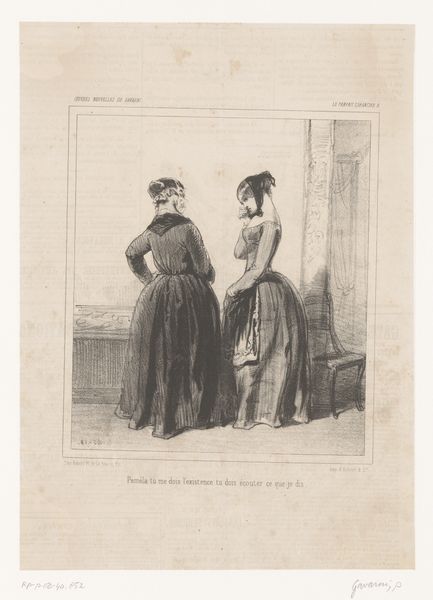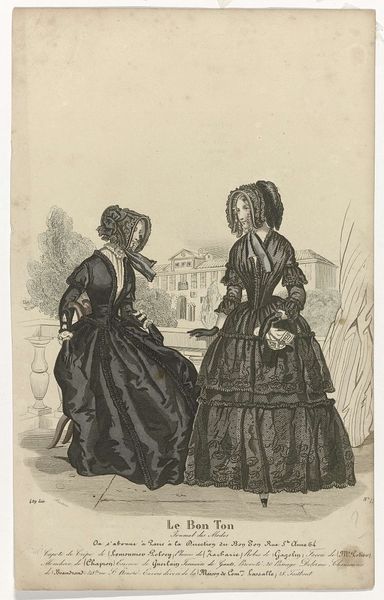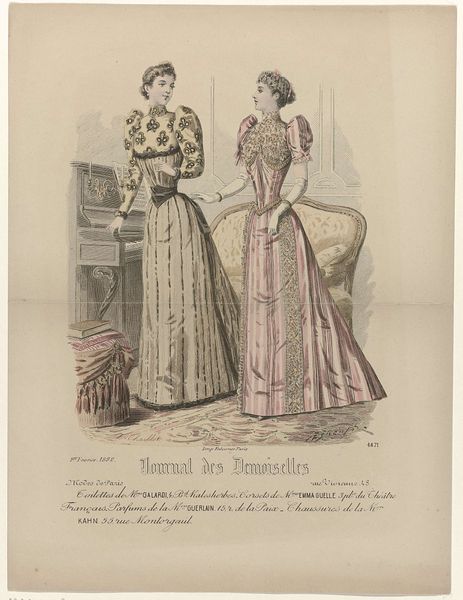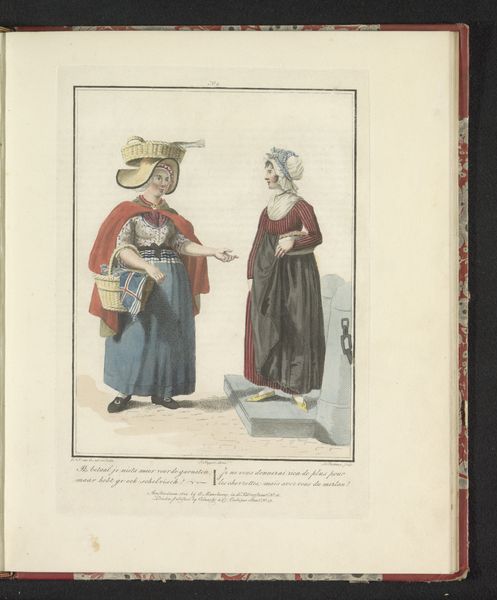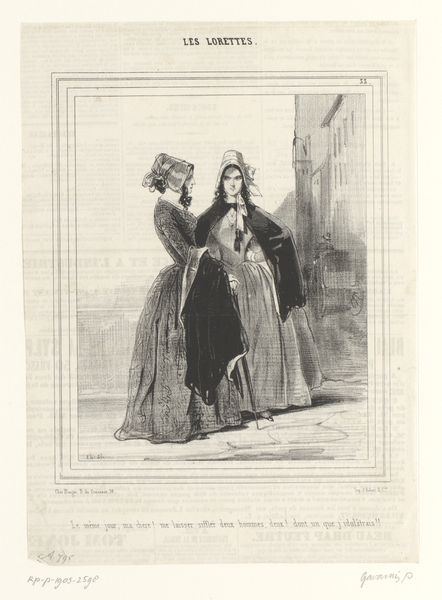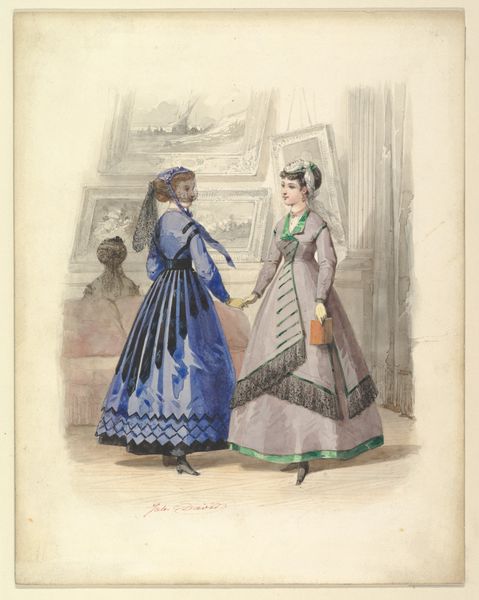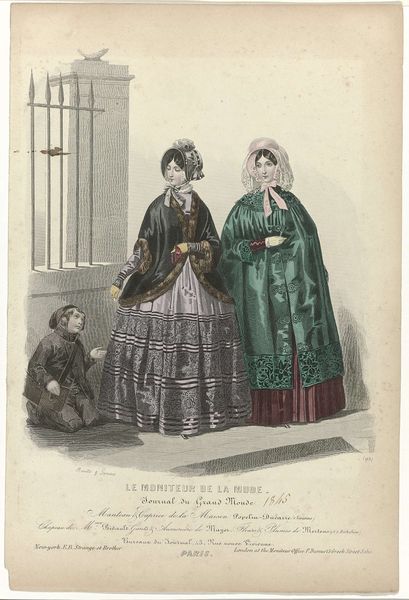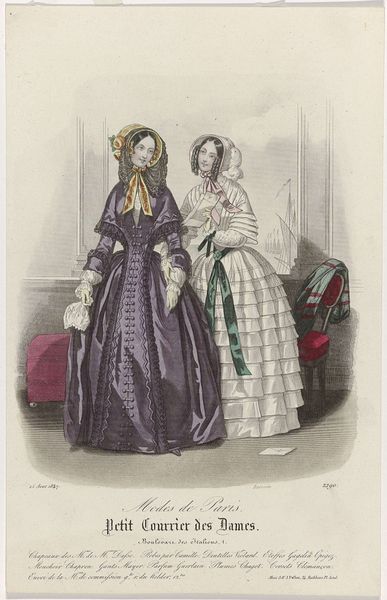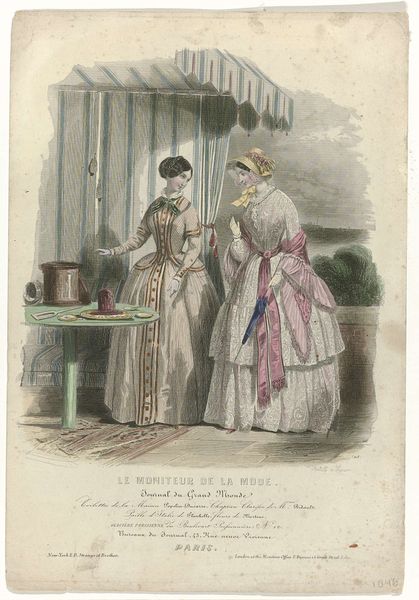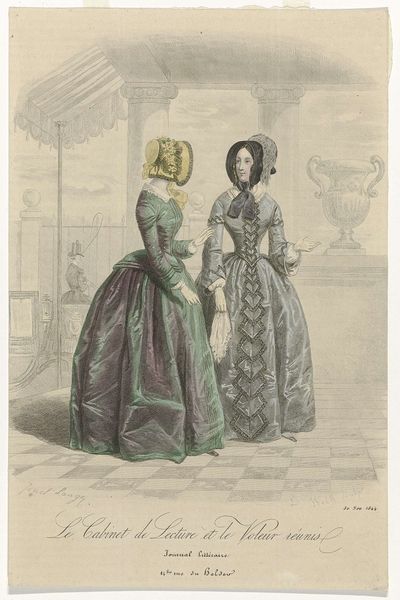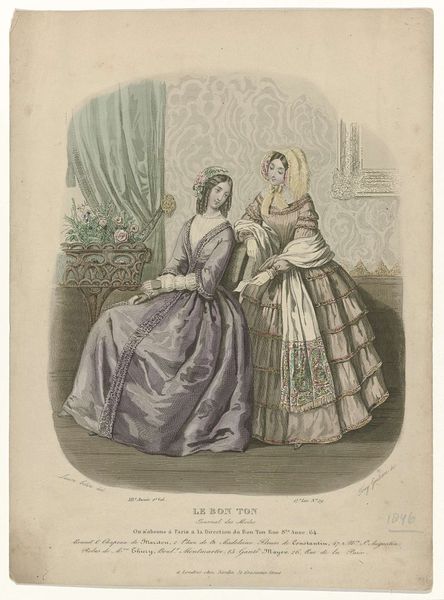
drawing, print, engraving
#
portrait
#
pencil drawn
#
drawing
#
dutch-golden-age
# print
#
figuration
#
genre-painting
#
northern-renaissance
#
engraving
#
regionalism
#
realism
Dimensions: height 336 mm, width 425 mm
Copyright: Rijks Museum: Open Domain
Curator: Looking at this engraving titled “Twee vrouwen uit Hindeloopen,” depicting two women from Hindeloopen, dating roughly between 1822 and 1895 and currently residing at the Rijksmuseum, I'm immediately drawn to the soft light. The artist, Valentijn Bing, really captured a quiet stillness. Editor: My first impression centers more on what’s beyond the aesthetics; I see a record of material culture, a document of labor and social relations. The women’s distinctive attire indicates a specific cultural output, but it also serves to situate these figures within systems of value and exchange. Curator: Exactly. I can also read it formally—how the vertical lines of the architecture are balanced by the curves in their dresses, leading my eyes up, grounding the subjects. The choice of monochrome also lends the piece an almost timeless feel, even though we know it represents a particular time and place. Editor: I see that ‘timelessness,’ but I can't help viewing it through a critical lens. Whose “time” are we talking about? The means of engraving inherently place it within a commercial print culture, democratizing an image initially produced through someone's specific labor. I think of it less as a quiet scene and more about how these women are made into symbols by way of labor in both artistic depiction and regional garment manufacturing. Curator: A valid point. The clothing becomes not just fabric, but a marker of identity, class, and regional affiliation. The precision of the lines in this engraving allows for a highly detailed depiction of textiles; that’s significant from a formalist perspective because it reinforces a kind of... hyper-realism of attire that may well be idealized. Editor: The labor inherent in textile creation within regional Hindeloopen is what draws me. Their garments were constructed by human hands, embedded with histories, possibly under strenuous conditions. I ponder if their presentation becomes enmeshed in cycles of manufacture and consumption, reinforcing particular values and maybe even exploitative relations. The social role and work they do seems embedded. Curator: I see the depth that perspective brings to this artwork. Thank you, I had not really contemplated the full force of those aspects and it shows us this picture has more to say. Editor: It's always compelling to observe the intersectionality that exists between making and materials; these are, in essence, embodiments of social realities and making a dialogue can add dimensions otherwise unrealized.
Comments
No comments
Be the first to comment and join the conversation on the ultimate creative platform.
